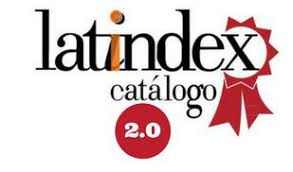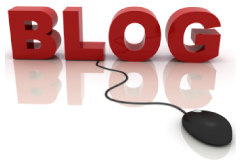La Gnatología basada en evidencia científica: Una revisión narrativa de la literatura.
DOI:
https://doi.org/10.31984/oactiva.v5i1.446Palabras clave:
GNATOLOGÍA, DESORDENES TEMPOROMANDIBULARES, DINAMICA MANDIBULARResumen
La gnatología es una ciencia odontológica que ha propuesto diversos conceptos y principios utilizados desde 1926, el objetivo de la presente revisión narrativa de la literatura es revisar algunos postuladados gantológicos usados y aceptados empíricamente por clínicos actualmente, buscando evidencia científica publicada que los respaldos.
Descargas
Citas
The glossary of prosthodontic terms. 7th ed. J Prosthet Dent 1999;81:71.
Ahlgren J. Mechanism of mastication. Acta Odontol Scand 1966;24(supp 44):1-109.
Ahlgren J. Pattern of chewing and malocclusion of teeth: a clinical study. Acta Odontol Scand 1967;25:313.
Wickwire NA, Gibbs CH, Jacobson AP, Lundeen HC. Chewing patterns in normal children. Angle Orthod 1981;51:48-60.
Gibbs CH, Masserman T, Reswwick JB, Derda JH. Functional movements of the mandible. J Prosthet Dent 1977; 26:604-20.
Guttetman AS. Chop-stroke chewers. Dent Prog 1961;1:254-7.
Sheppard IM. The effect of extreme vertical overlap on masticatory stroke. J Prosthet Dent 1965;15:1035-42.
Roth RH. Temporomandibular pain-dysfunction and occlusal relationship. Angle Orthod 1973;43:136-53.
Roth RH. The maintenance system and occlusal dynamics. Dent Clin North Am 1976;20:761-88.
Roth RH. Functional occlusion for the orthodontist II. J Clin Orthod 1981;25:100-23.Rinchuse DJ, Kandasamy S. Centric relation: a historical and contemporary orthodontic perspective. J Am Dent Assoc 2006; 137:494-501.
McCollum BB, Stuart CE. A research report. South Pasadena: Scientific Press; 1955. p. 12-3, 34, 86-91.
Schillingburg HT, Wilson EL, Morrison JT. Guide to occlusal waxing. 3rd ed. Chicago: Quintessence; 2000. p. 1-58.
Stuart CE. The contributions of gnathol- ogy to prosthodontics. J Prosthet Dent 1973;30:607-8.
Rinchuse DJ, Kandasamy S, Sciote J. A contemporary and evidence-based view of canine protected occlusion. Am J Orthod Dentofacial Orthop 2007;132:90-102.
Rinchuse DJ, Rinchuse DJ, Kandasamy S. Evidence-based vs experience-based views on occlusion and TMD. Am J Orthod
Schwartz L. Conclusions of the TMJ clinic at Columbia. J Periodontol 1958;29:210-2.
Laskin DM. Etiology of the pain-dysfunction syndrome. J Am Dent Assoc 1969;79:147-53.
Greene CS, Laskin DM. Long-term evaluation of treatment for myofascial pain-dysfunction analysis. J Am Dent Assoc 1983; 107:235-8.
Dworkin SF, Huggins KH, Wilson L, Mancl L, Turner J, Massoth D, et al. A randomized clinical trial using research diagnostic criteria for temporomandibular disorders-axis II to target clinic cases for a tailored self-care TMD treatment program. J Orofac Pain 2002;16:48-63.
Dworkin SF, Turner JA, Mancl L, Wilson L, Massoth D, Juggins KH, et al. A randomized clinical trial of a tailored comprehensive care treatment program for temporomandibular disorders. J Orofac Pain 2002;16:259-76.
Greene CS, Laskin DM. Temporomandibular disorders: moving from a dentally based to a medically based model. J Dent Res 2000;79:1736-9.
Greene CS. The etiology of temporomandibular disorders: implications for treatment. J Orofac Pain 2001;15:93-105.
Sessle BJ. The neural basis of temporomandibular joint and masticatory muscle pain. J Orofac Pain 1999;13:238-45.
Diatchenko L, Nackley AG, Slade GD, Fillingim RB, Maixner W. Idiopathic pain disorders—pathways of vulnerability. Pain 2006;123:226-30.
Diatchenko L, Nackley AG, Slade GD, Bhalang K, Belfer I, Max MB, et al. Catechol-O-methyltransferase gene polymorphisms are associated with multiple pain-evoking stimuli. Pain 2006;125:216-24.
Diatchenko L, Slade GD, Nackley AG, Bhalang K, Sigurdsson A, Belfer I, et al. Genetic basis for individual variations in pain perception and the development of a chronic pain condition. Hum Mol Genet 2005;14:135-43.
Sadowsky C, BeGole EA. Long-term status of temporomandibular joint function and functional occlusion after orthodontic treatment. Am J Orthod 1980;18:201-12.
Mishra KD, Gatchel RJ, Gardea MA. The relative efficacy of three cognitive-behavioral treatment approaches to temporomandibular disorders. J Behav Med 2000;23:293-309.
Fernandez E, Turk DC. The utility of cognitive coping strategies for altering pain perception: a meta-analysis. Pain 1989;38: 123-35.
Flor H, Birbaumer N. Comparison of the efficacy of electromyographic biofeedback, cognitive-behavioral therapy, and conservative medical interventions in the treatment of chronicmusculoskeletal pain. J Consult Clin Psychol 1993;61:653-8.
Dworkin SF, Massoth DL. Temporomandibular disorders and chronic pain: disease or illness? J Prosthet Dent 1994;72:29-38.
Dworkin SF, Turner JA, Wilson L, Massoth D, Whitney C, Huggins KH, et al. Brief group cognitive-behavioral interventionfor temporomandibular disorders. Pain 1994;59:175-87.
Turk D, Zaki H, Rudy T. Effects of intraoral appliance and biofeedback/stress management alone and in combination in treating pain and depression in TMD. patients. J Prosthet Dent1993;70:158-64.
Dworkin SF, Huggins KH, Wilson L, Mancl L, Turner J, Massoth D, et al. A randomized clinical trial using research diagnosticcriteria for temporomandibular disorders-axis II to target clinic cases for a tailored self-care TMD treatment program. J Orofac Pain 2002;16:48-63.
Dworkin SF, Turner JA, Mancl L, Wilson L, Massoth D, Juggins KH, et al. A randomized clinical trial of a tailored comprehensive care treatment program for temporomandibular disorders. J Orofac Pain 2002;16:259-76.
Rinchuse DJ, Kandasamy S, Rinchuse DJ. Word of mouth—articulators in orthodontics: chewing the facts. Part 1. Orthodontic Products 2007;14:152-5.
Rinchuse DJ, Kandasamy S, Rinchuse DJ.Word of mouth-articulators in orthodontics: chewing the facts. Part 2. Orthodontic Products 2007;14:40-2.
Sadowsky C, BeGole EA. Long-term status of temporomandibular joint function and functional occlusion after orthodontic treatment. Am J Orthod 1980;18:201-12.
Sadowsky C, Polson AM. Temporomandibular disorders and functional occlusion after orthodontic treatment: results of two long-term studies. Am J Orthod 1984;86:386-90.
McNamara JA Jr, Seligman DA, Okeson JP. Occlusion, orthodontic treatment, and temporomandibular disorders: a review. J Orofac Pain 1995;9:73-89.
Kim MR, Graber TM, Vianna MA. Orthodontics and temporomandibular disorders: a meta-analysis. Am J Orthod Dentofacial Orthop 2002;121:438-46.
Reynders RM. Orthodontics and temporomandibular disorders: a review of the literature (1966-1988). Am J Orthod Dentofacial Orthop 1990;97:463-71.
Greene CS, Laskin DM. Temporomandibular disorders: movingfrom a dentally based to a medically based model. J Dent Res2000;79:1736-9.
Greene CS. The etiology of temporomandibular disorders: implications for treatment. J Orofac Pain 2001;15:93-105.
Flor H, Birbaumer N. Comparison of the efficacy of electromyographic biofeedback, cognitive-behavioral therapy, and conservative medical interventions in the treatment of chronic musculoskeletal pain. J Consult Clin Psychol 1993;61:653-8.
Turk DC, Rudy TE, Kubinski JA, Zaki HS, Greco CM. Dysfunctional patients with temporomandibular disorders: evaluating the efficacy of a tailored treatment protocol. J Consult Clin Psychol 1996;64:139-46.
Greco CM, Rudy TE, Turk DC, Herlich A, Zaki HH. Traumatic onset of temporomandibular disorders: positive effects of a standardized conservative treatment program. Clin J Pain 1997;13:337-47.
Rudy TE, Turk DC,Kubinski JA, Zaki HS. Differential treatment response of TMD patients as a function of psychological characteristics.Pain 1995;61:103-12.
Riise C, Sheikholeslam A. The influence of experimental inter- fering occlusal contacts on the postural activity of the anterior temporal and masseter muscle in young adults. J Oral Rehabil 1982;9:419-25.
Randow K, Carlsson K, Edlund J, Obery T. The effect of an oc- clusal interference on the masticatory system. An experimental investigation. Odontol Revy 1976;27:245-56.
Magnusson T, Enbom L. Signs and symptoms of mandibular dysfunction after introduction of experimental balancing-side interferences. Acta Odont Scand 1984;42:129-35.
Rugh JD, Barghi N, Drago CJ. Experimental occlusal discrep- ancies and nocturnal bruxism. J Prosthet Dent 1984;51:548-53.
Larheim TA, Westesson PL, Sano T. Temporomandibular joint disk displacement: comparison in asymptomatic volunteers and patients. Radiology 2001;218:428-32.
Kurita K, Westesson PL, Yuasa H, Toyama M, Machida J, Ogi N. Natural course of untreated symptomatic temporomandibular joint disc displacement without reduction. J Dent Res 1998;77: 361-5.
Gilboe DB. Centric relation as the treatment position. J Prosthet Dent 1983;50:685-9.
Braun S. Achieving improved visualization of the temporoman- dibular joint condyle and fossa in the sagittal cephalogram and a pilot study of their relationship in habitual occlusion. Am J Orthod Dentofacial Orthop 1996;109:635-8.
Emshoff R, Brandlmaier I, Gerhard S, Stobl H, Bertram S, Rudisch A. Magnetic resonance imaging predictors of temporo- mandibular joint pain. J Am Dent Assoc 2003;134:705-14.
Alexander SR, Moore RN, DuBois LM. Mandibular condyle po- sition: comparison of articulator mountings and magnetic reso- nance imaging. Am J Orthod Dentofacial Orthop 1993;104: 230-9.
Woda A, Vignernon P, Kay D. Non-functional and functional oc- clusal contacts: a review of literature. J Prosthet Dent 1979;42: 335-41.
Rinchuse DJ, Kandasamy S. Articulators in orthodontics: an evidence-based perspective. Am J Orthod Dentofacial Orthop 2006;129:299-308.
Guichet NF. Biologic laws governing functions of muscles that move the mandible. Part I. Occlusal programming. J Prosthet Dent 1977;37:648-56.
Guichet NF. Biologic laws governing functions of muscles that move the mandible. Part II. Condylar position. J Prosthet Dent 1977;38:35-41.
Guichet NF. Biologic laws governing functions of muscles that move the mandible. Part III. Speed of closuremanipulation of the mandible. J Prosthet Dent 1977;38:174-9.
Guichet NF. Biologic laws governing functions of muscles that move the mandible. Part IV. Degree of jaw separation and potential for maximum jaw separation. J Prosthet Dent 1977;38:301-10.
Schwartz H. Occlusal variations for reconstructing the natural dentition. J Prosthet Dent 1986;55:101-5
Lindauer SJ, Isaacson RJ, Davidovich M. Condylar movement and mandibular rotation during jaw opening. Am J Orthod Den- tofacial Orthop 1995;107:573-7.
Cordray FE. Three-dimensional analysis of models articulated in the seated condylar position from a deprogrammed asymptom- atic population: a prospective study. Part 1. Am J Orthod Dento- facial Orthop 2006;129:619-30.
Bryant SR. The rationale for management of morphologic variations and nonphysi- ologic occlusion in young dentition. Int J Prosthodont 2003;16 Suppl:75-7.
Ross B. Satisfactory occlusal relations for the individual with craniofacial anomaly. Int J Prosthodont 2003;16 Suppl:74-5.
Capp NJ, Warren K. Restorative treatment for patients with excessive vertical overlap. Int J Prosthodont 1991;4:353-60.
Ambard A, Mueninghoff L. Planning re- storative treatment for patients with severe Class II malocclusions. J Prosthet Dent 2002;88:200-7.
Keim RG, Collins B, Morgando C, Smart F, Zeigler R, Wasson J. Two phase treatment of a severe Class II, division I malocclu- sion. Am J Orthod Dentofacial Orthop 1996;109:461-5.
Publicado
- Resumen 1605
- PDF 1874
- HTML 106
Cómo citar
Número
Sección
Licencia
Se autoriza la reproducción total y parcial, y la citación del material que aparece en la revista, siempre y cuando se indique de manera explícita: nombre de la revista, nombre del autor(es), año, volumen, número y páginas del artículo fuente. Las ideas y afirmaciones consignadas por los autores están bajo su responsabilidad y no interpretan necesariamente las opiniones y políticas del Consejo Editorial de la Revista OActiva ni de la Universidad Católica de Cuenca.
La Revista OActiva utiliza la Licencia Creative Commons de Reconocimeinto-NoComercial-CompartirIgual 4.0, que es la siguiente: CC BY-NC-SA 4.0 Internacional.











